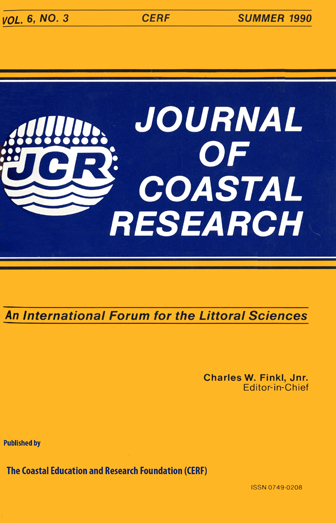Relative Sea-Level Change and Coastal Response, Northeast Newfoundland
Keywords:
Dune ridges, elative sea level, beaches, palynology, peatAbstract
Sand beaches and coastal dunes are prominent features on the northeast coast of Newfoundland, between Bonavista Bay and Hamilton Sound. This is in contrast to most other parts of the island, where coastal progradation typically takes the form of gravel beach ridges. At Man Point, near Musgrave Harbour, an extensive beach- and dune-ridge foreland is mantled by freshwater peat up to 2.9 m thick. Radiocarbon dates on basal peat are 3,150 ± 90 BP, 3,060 ± 90 BP and 2,740±60 BP (unadjusted), The base of salt-marsh peat landward of the harrier is dated at 2,980 ± 90 BP. At Deadman's Bay, where moribund flood tidal deltas, flood channels and washover fans at the north end of the barrier system provide evidence of an arrested transgressive phase, organic deposits at two sites are dated at 1,780 ± 80 BP and 1,260 ± 70 BP. An extensive, partly buried, peat unit overlying old dune ridges at Cape Freels is dated at l,630 ± 50 BP. We also report on a core from a backbarrier marsh at Eastport, in western Bonavista Bay, where freshwater organic material at - 3.3 m is dated at 5,490 ± 120 BP. The evidence from these and other locations suggests that, between 12 and 10 ka BP, relative sea level fell below present datum to an undetermined minimum. During the subsequent transgression it was still below - 4 m at 5.5 ka BP, but had reached approximately - 0.7 m by 3 ka BP. With relatively early termination of the Holocene transgression, some coastal deposits in the area were stabilized, becoming mantled by woodland, marsh and bog. We note the apparent absence of major glacigenic sources, such as those which supply material to prograded coastal systems elsewhere on the island, and suggest a likely course for the episodic postglacial evolution of coastal sediment bodies in the region.


